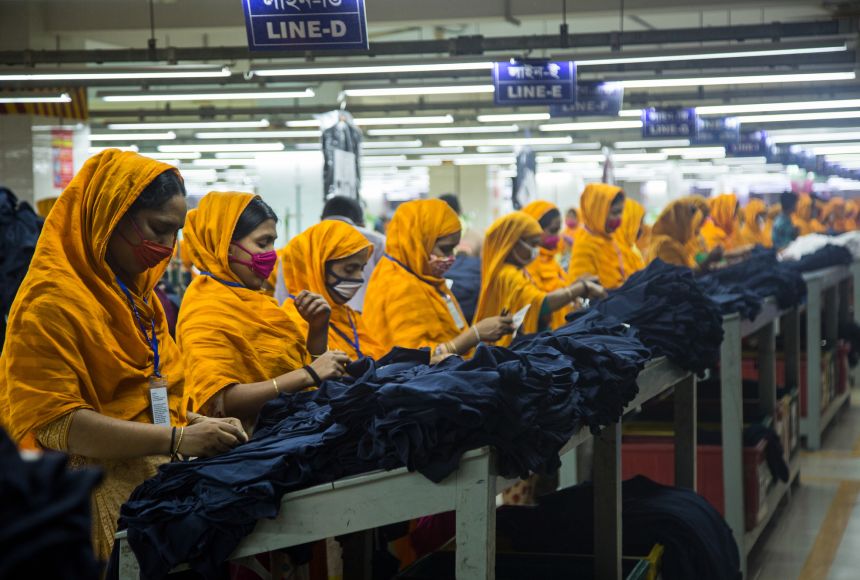ARTICLE
leveledARTICLE
Effects of Economic Globalization
Effects of Economic Globalization
Globalization has led to increases in standards of living around the world, but not all of its effects are positive for everyone.
Grades
3 - 12
Subjects
Social Studies, Economics, World History
Image
Bangladesh Garment Workers
The garment industry in Bangladesh makes clothes that are then shipped out across the world. It employs as many as four million people, but the average worker earns less in a month than a U.S. worker earns in a day.
Photograph by Mushfiqul Alam

Media Credits
The audio, illustrations, photos, and videos are credited beneath the media asset, except for promotional images, which generally link to another page that contains the media credit. The Rights Holder for media is the person or group credited.
Director
Author
Production Managers
Program Specialists
Producer
other
Last Updated
February 20, 2024
For information on user permissions, please read our Terms of Service. If you have questions about how to cite anything on our website in your project or classroom presentation, please contact your teacher. They will best know the preferred format. When you reach out to them, you will need the page title, URL, and the date you accessed the resource.
Media
If a media asset is downloadable, a download button appears in the corner of the media viewer. If no button appears, you cannot download or save the media.
Text
Text on this page is printable and can be used according to our Terms of Service.
Interactives
Any interactives on this page can only be played while you are visiting our website. You cannot download interactives.
